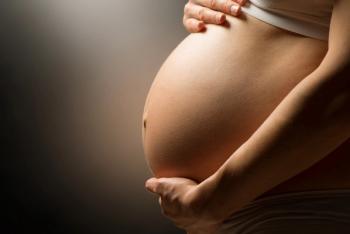
In a recent study, the accuracy of an artificial intelligence tool operated by novice users with no prior ultrasonography training for estimating gestational age was similar to that of expert sonographers conducting standard biometry.


In a recent study, the accuracy of an artificial intelligence tool operated by novice users with no prior ultrasonography training for estimating gestational age was similar to that of expert sonographers conducting standard biometry.

Following the Supreme Court’s decision to retain mifepristone access in June 2024, health care providers have spoken out about the need to fight for reproductive health care protections on a national and local level.

Review some of the top stories from the Contemporary OB/GYN website over the last week, and catch up on anything you may have missed.

Learn about the epidemiology, transmission, clinical signs, and more of cytomegalovirus, also known as Human herpesvirus 5.

A study presented at the Infectious Disease Society for Obstetrics and Gynecology 2024 Annual Meeting found an increase of 4 days between diagnosis and treatment among pregnant patients with congenital syphilis vs those without congenital syphilis.

A new pilot study published in the International Urogynecology Journal found that Materna Medical’s Prep Device, a pelvic floor dilator, reduced full levator ani muscle avulsion during vaginal delivery in first-time mothers.

A recent study highlights how a lack of reliable transportation significantly reduces influenza vaccination rates among pregnant individuals, underscoring the need for improved prenatal care access.

A study discussed by Tabby Khan, MD. MPH, reveals low rates of low-dose aspirin use among high-risk preeclampsia patients, highlighting the need for increased clinician awareness and better insurance coverage to improve maternal and infant health outcomes.

A recent study found higher levels of moral distress among clinicians practicing in states with strict abortion restrictions following the Supreme Court's Dobbs decision.

Review some of the top stories from the Contemporary OB/GYN website over the last week, and catch up on anything you may have missed.

A recent study found that women with preeclampsia during pregnancy face a higher risk of developing vascular dementia, but additional data was needed for other forms of dementia.

Despite guidelines, a study reveals a significant gap in the prescription of low-dose aspirin to pregnant women at high risk of preeclampsia, highlighting an urgent need for improved adherence and monitoring.

A recent study reveals that children born to mothers with hypertensive disorders during pregnancy are significantly more likely to develop strabismus.

A recent study highlights the improved outcomes yet elevated risks associated with gestational carrier pregnancies compared to general pregnancies.

Review some of the top stories from the Contemporary OB/GYN website over the last week, and catch up on anything you may have missed.

Padmashree Woodham, MD, professor of maternal-fetal medicine at Wellstar Medical College of Georgia Health, outlines the new ACOG practice update on biomarker testing for risk assessment of hypertensive disorders in pregnancy.

A recent study found that women undergoing uterine artery embolization during their first delivery face significantly higher risks of adverse prenatal outcomes in subsequent pregnancies.

A recent study reveals that unexpected red blood cell antibodies are present in 1.85% of pregnant women, highlighting the need for potential interventions to manage fetal anemia.

A recent study found that implementing postpartum transition support significantly boosts primary care engagement and reduces readmissions for chronic conditions.

Review some of the top stories from the Contemporary OB/GYN website over the last week, and catch up on anything you may have missed.

A recent study reveals that maternal body mass index during pregnancy is associated with children's mid-childhood educational attainment, whereas maternal glucose status shows no significant impact.

A recent study reveals that nulliparous women have a higher incidence of postpartum hemorrhage compared to multiparous women, highlighting the need for targeted prediction models and early intervention strategies.

Review some of the top stories from the Contemporary OB/GYN website over the last week, and catch up on anything you may have missed.

A recent study found that while vaginal micronized progesterone 200 mg twice daily does not prevent spontaneous preterm delivery after arrested preterm labor, it may benefit twin pregnancies.

A recent study highlights a significant increase in preterm delivery risk among patients using assisted reproductive technology who experience placental abruption.